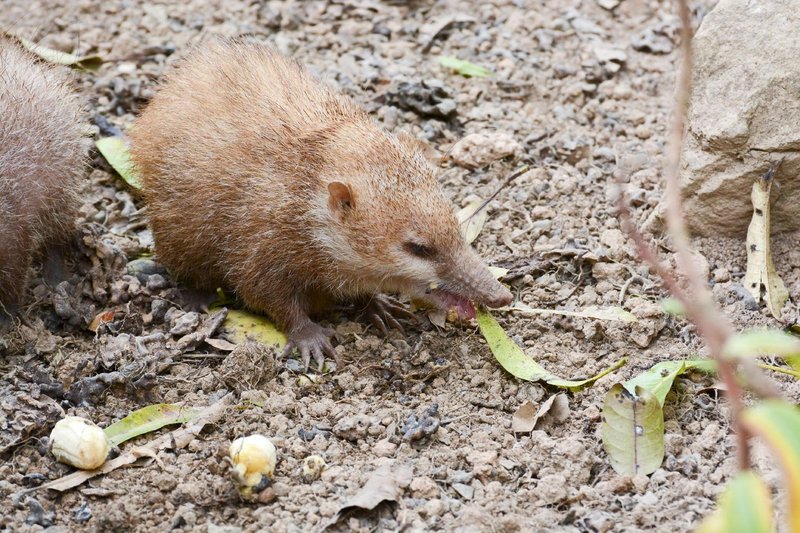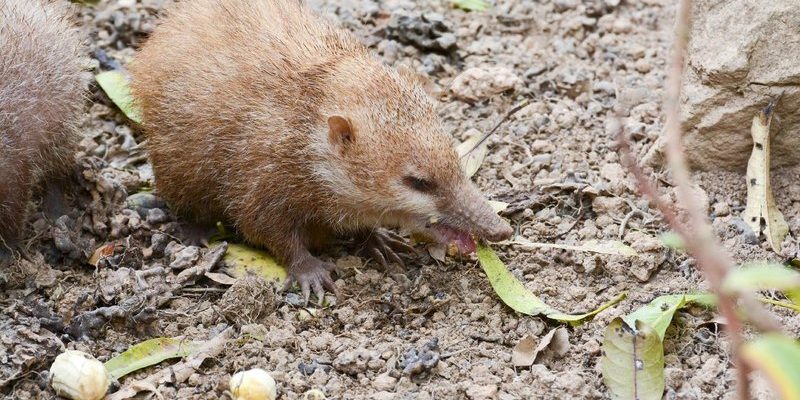
The world of tenrecs is one filled with surprises. These little guys have adapted to a variety of landscapes, from dense tropical forests to dry, rocky hills. It’s like they’re nature’s own Swiss Army knives, equipped with a toolkit for survival. So, how do they manage to live in such harsh environments? Let’s dig into the fascinating ways tenrecs have evolved to overcome challenges and thrive.
Unique Adaptations for Climate Survival
Tenrecs are remarkable for their ability to cope with extreme weather conditions. Their fur isn’t just for show—it plays a critical role in temperature regulation. In cooler climates, their thick, spiny fur helps keep them warm, acting like a cozy blanket. When the temperature rises, they can shed some of that fur, similar to how we might wear lighter clothes in summer.
In Madagascar, where tenrecs primarily reside, the environment can be unforgiving. For instance, the dry seasons can be brutal. To combat this, tenrecs have developed a fascinating behavior—torpor. This is a state similar to hibernation but doesn’t last as long. During particularly hot or dry spells, they reduce their metabolic rate, conserving energy and resources. It’s like hitting the pause button on life until conditions improve.
You might be wondering how they find food in such harsh conditions. Tenrecs are omnivorous, which means they eat a variety of things, from insects to fruits to small plants. This varied diet not only gives them options but also helps them adapt to whatever food is available. If one food source runs dry, they can easily switch to another—talk about being resourceful!
The Role of Social Behavior
Another intriguing aspect of tenrec survival is their social behavior. Depending on the species, tenrecs can be solitary or social animals. Some live in groups, which can be a game-changer when facing adversities like food shortages. Living together allows them to forage more effectively as they can share information about where to find food and water.
For example, in the communal species, individuals can take turns foraging, which reduces the risk of depleting local resources. This cooperative behavior ensures that everyone has enough to eat, even in tough times. It’s a bit like a potluck dinner—each tenrec brings something to the table.
Surprisingly, tenrecs have also been known to communicate through various sounds and behaviors. This communication helps them alert each other to dangers or food sources. Imagine hearing a little chatter in the brush—it’s likely a group of tenrecs sharing secrets about where to find the best meal.
Physical Defense Mechanisms
Tenrecs are also equipped with built-in protection against predators. Their spiny backs might remind you of a hedgehog, but they have a unique twist—some species can even produce a sharp, pungent smell when threatened. This can deter even the hungriest of predators, giving tenrecs a fighting chance to escape unharmed.
When you think about it, their spines serve a dual purpose—providing both protection and insulation. This clever adaptation means that even when faced with predators, tenrecs can maintain their survival strategies without compromising their safety. It’s a classic case of survival of the fittest!
Another interesting feature is their ability to burrow. Tenrecs can dig down into the ground to create burrows for shelter. This not only hides them from predators but also provides a cooler environment during the scorching heat of day. Imagine having your own little underground retreat to escape the world—it’s a pretty sweet setup!
Water Conservation Techniques
Living in dry regions means that water is often a precious resource for tenrecs. They have adapted by developing efficient ways to conserve water. For instance, by lowering their metabolic rate during torpor, they reduce their need for water.
Many tenrecs also obtain moisture from the food they eat. Fruits, insects, and plants can all provide the hydration they require. Think of it like getting a drink from your snack—every little bit counts when water is in short supply.
Interestingly, tenrecs can also tolerate some level of dehydration. This means they can go longer periods without fresh water compared to other animals. It’s a crucial survival skill when rainfall is sparse. Their ability to endure tough conditions showcases the resilience of nature’s creations.
Adaptation to Predation
Predators are a constant threat for tenrecs, so they’ve developed some fascinating strategies to evade capture. One of the most intriguing is their “freeze and flee” tactic. When sensing danger, some tenrec species can remain completely still, blending in with their surroundings. This camouflage can buy them precious moments to escape.
In addition, their behavior is adapted to nighttime activity. By being primarily nocturnal, tenrecs can avoid many daytime predators. This adaptation allows them to forage at night when it’s cooler and safer, significantly increasing their chances of survival.
Tenrecs also rely on their sharp senses to detect danger. Their keen hearing and smell make it easier for them to sense approaching threats in time to escape. It’s almost as if they have a built-in alarm system that keeps them aware of their surroundings, ready to dart away at a moment’s notice.
Importance of Habitat Protection
It’s crucial to recognize that even with their impressive survival skills, tenrecs face significant threats from habitat loss. Deforestation, agricultural expansion, and climate change are putting their future at risk. Protecting these unique creatures and their habitats isn’t just vital for them; it’s important for the entire ecosystem.
Without proper habitats, tenrecs struggle to find food, water, and shelter. Conservation efforts focused on preserving their environments can ensure that future generations of tenrecs continue to thrive. For all their adaptations, they still rely heavily on the earth to provide the resources they need.
Community involvement and awareness are key in these efforts. By learning about and advocating for tenrec conservation, we can help raise awareness and promote actions that support their survival. Just like tenrecs work together, we can also come together to protect these incredible animals and their habitats.
There’s something truly inspiring about how tenrecs manage to survive in the face of adversity. Their unique adaptations, social behaviors, and resilience showcase the incredible power of nature. From their spiny defenses to their clever foraging strategies, tenrecs embody the spirit of survival.
As we learn more about these remarkable creatures, let’s appreciate the beauty and complexity of the ecosystems they inhabit. The next time you hear about tenrecs, remember their journey through harsh environments and the lessons they teach us about resilience and adaptability. Protecting their world is essential, not just for them but for the harmony of our planet. So, let’s cheer on the tenrec—nature’s little survivor!

